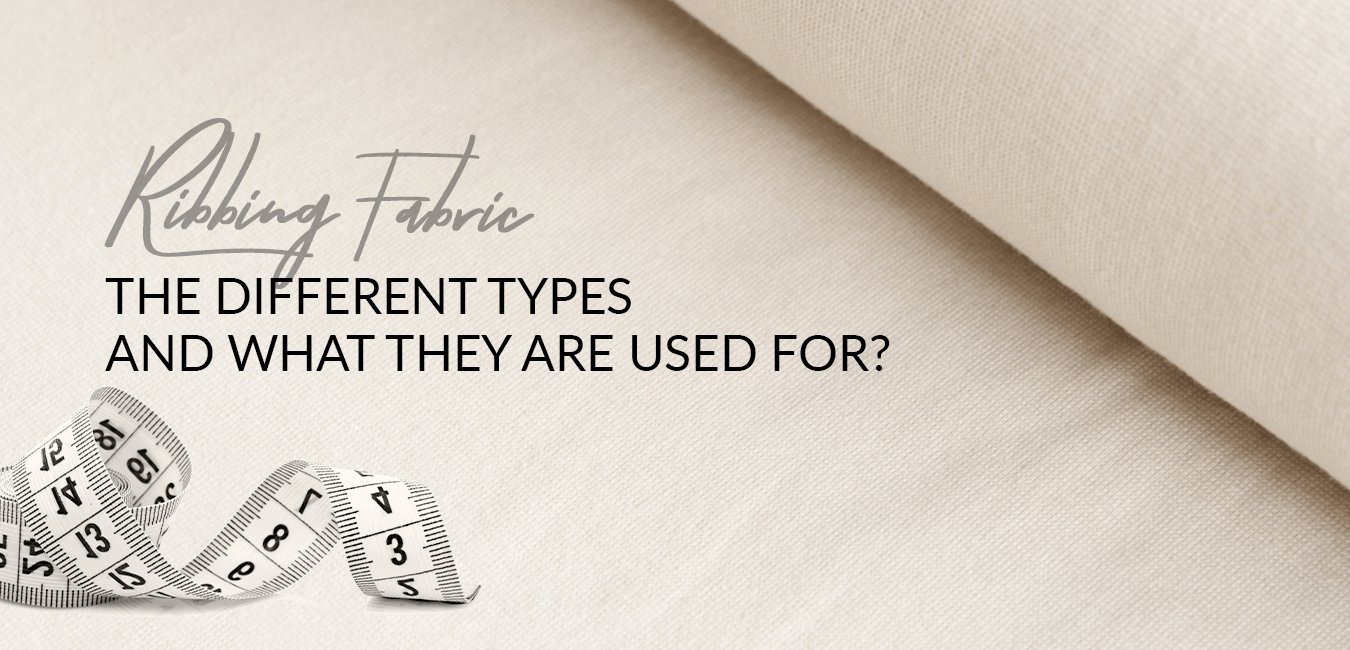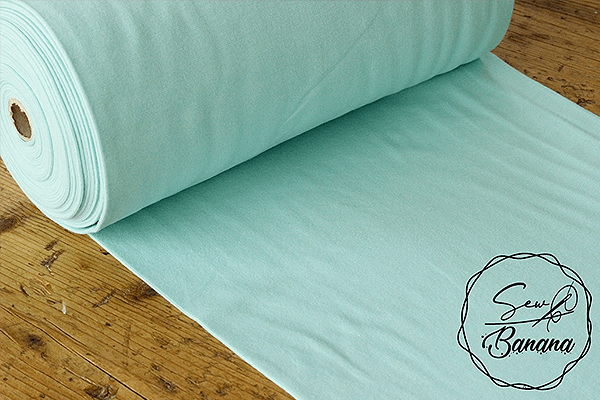Ribbing Fabric: The different types and what they are used for?

There are many different fabrics to pick from while sewing. Rib knit fabric is a type that you may not be familiar with. Rib knit fabric has a lot of elasticity and is made of parallel vertical lines. As a result, it is perfect for wearing close-fitting clothes such as shirts, leggings, undergarments, socks, etc. Let’s take a deeper look at the various rib fabric types and their uses.
Also, read on to learn more about rib knit fabric characteristics.
What is rib fabric? Rib fabric characteristics
- Rib knit fabrics are distinguished by their unique ribbing, which appears as vertical lines on the fabric’s surface. On the front and back of the fabric, you can identify bumps or ridges that run parallel to the selvedge. The ribbing is made by alternating rows of knit and purl stitches, giving the cloth a textured appearance.
- Sew Banana’s rib knit fabrics can range from lightweight and highly elastic to thick and relatively strong, depending on the yarn and stitch used.
- They have very minimal longitudinal stretch but plenty of transverse elasticity. Check the stretch % when looking for rib knit fabric since this will decide how much the fabric will stretch when utilized in a garment.
- Rib knits are a form of double-faced fabric, which means they appear the same on both the front and back. As a result, they are suitable for tasks where the cloth must appear the same on both sides.
- Because of its overall stretchiness, this fabric is ideal for close-fitting clothes. Rib knits are also used to make garment bands such as neckbands, cuffs, waistbands, and hems. Sew Banana’s rib knit fabric can be used to construct a neckband on a t-shirt or a waistband on leggings (typically in a contrasting color).
Different Rib Fabric Types
Ribbed knit fabrics contain a distinctive pattern of vertical ribs on both sides, created by alternating knit (higher) and purl (lower) stitches. Ribs can be small (1 x 1 – or one knit stitch followed by one purl stitch), broad (3 x 3, 4 x4, etc.), or unequal in width, such as 2 x 3.
If you’re perplexed by all those numbers, the first relates to the number of rows with knit stitches. The second number is the number of purl stitches in each row.
1×1 Rib Knit Fabric
1×1 rib knits are constructed by alternating knit and purl stitches, so you’ll notice a bump created by a knit stitch, then a ridge created by a purl stitch, then another bump, then another ridge, and so on. This very elastic cloth holds its shape nicely and appears the same on both sides.
2×2 Rib Knit Fabric
2×2 rib knits, like 1×1 rib knits, feature two knit stitches followed by two purl stitches to form evenly proportioned bumps and ridges.
2×1 Rib Knit Fabric
This rib knit is made using a pattern of two knit stitches followed by one purl stitch, giving it a chunkier appearance than the 1×1 rib knit.
Tubular rib knit fabric
Tubular rib knits are made and marketed in a tube shape with no selvedge. They are typically made by circular knitting using specialized equipment.
Rib fabric uses
Rib cloth offers substantial flexibility and elongation. It is commonly used in upper apparel and medical, unique sportswear, t-shirt skirts, collars, sleeves, knitted cuffs, caps, men’s socks, and other fields. Ribbing tends to flex laterally, resulting in tiny pleats where the purl threads recede, and the knit stitches emerge. As a result, ribbing is widely used for cuffs, sweater hems, and, more generally, any form-fitting edge.
Few final thoughts
Rib knit is a knitted fabric featuring alternating high and low knit columns. They are more elastic and durable than jersey knits and tend to fit better on the body. There are different rib fabric types that we discussed in this blog. We also discussed the rib knit fabric characteristics and rib fabric uses throughout this blog. Check out Sew Banana’s rib fabric types and shop for the best ones you require.








